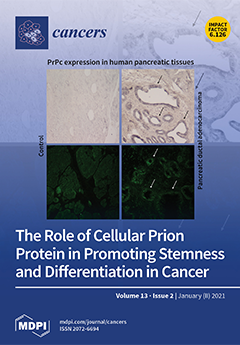Open AccessArticle
Discovery of Functional Alternatively Spliced PKM Transcripts in Human Cancers
by
Xiangyu Li, Woonghee Kim, Muhammad Arif, Chunxia Gao, Andreas Hober, David Kotol, Linnéa Strandberg, Björn Forsström, Åsa Sivertsson, Per Oksvold, Hasan Turkez, Morten Grøtli, Yusuke Sato, Haruki Kume, Seishi Ogawa, Jan Boren, Jens Nielsen, Mathias Uhlen, Cheng Zhang and Adil Mardinoglu
Cited by 9 | Viewed by 4150
Abstract
Pyruvate kinase muscle type (
PKM) is a key enzyme in glycolysis and plays an important oncological role in cancer. However, the association of
PKM expression and the survival outcome of patients with different cancers is controversial. We employed systems biology methods
[...] Read more.
Pyruvate kinase muscle type (
PKM) is a key enzyme in glycolysis and plays an important oncological role in cancer. However, the association of
PKM expression and the survival outcome of patients with different cancers is controversial. We employed systems biology methods to reveal prognostic value and potential biological functions of
PKM transcripts in different human cancers. Protein products of transcripts were shown and detected by western blot and mass spectrometry analysis. We focused on different transcripts of
PKM and investigated the associations between their mRNA expression and the clinical survival of the patients in 25 different cancers. We find that the transcripts encoding PKM2 and three previously unstudied transcripts, namely ENST00000389093, ENST00000568883, and ENST00000561609, exhibited opposite prognostic indications in different cancers. Moreover, we validated the prognostic effect of these transcripts in an independent kidney cancer cohort. Finally, we revealed that ENST00000389093 and ENST00000568883 possess pyruvate kinase enzymatic activity and may have functional roles in metabolism, cell invasion, and hypoxia response in cancer cells. Our study provided a potential explanation to the controversial prognostic indication of
PKM, and could invoke future studies focusing on revealing the biological and oncological roles of these alternative spliced variants of
PKM.
Full article
►▼
Show Figures






